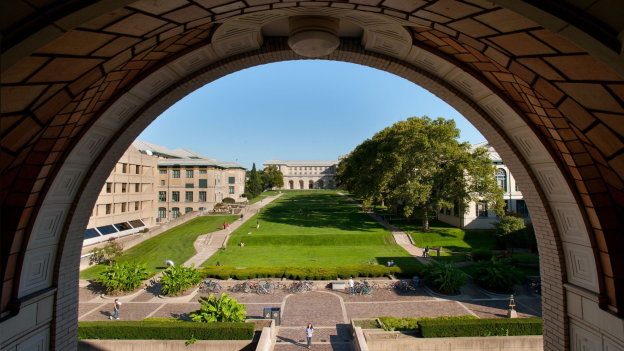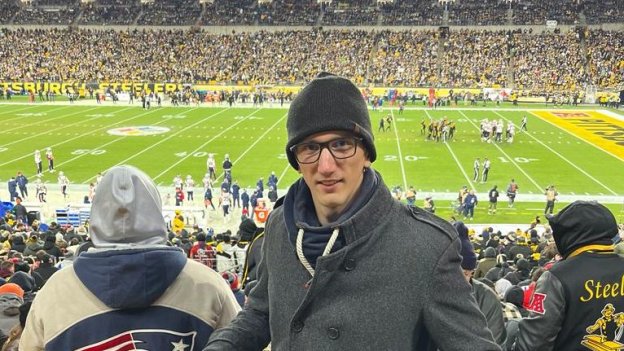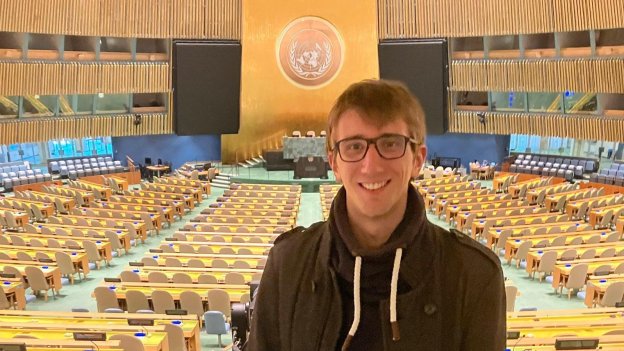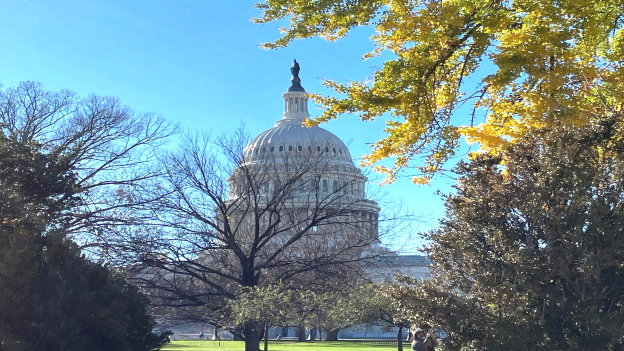Simon Schwarz
 CMU
CMU
Carnegie Mellon University (CMU)
„Nights out at the cinema to watch a Hollywood blockbuster, the worlds of breathtaking computer games, computer-aided design in architecture and engineering, visualising MRI scans in hospitals and even VR glasses used by tech giants: none of these would be possible without advances in computer graphics, the field of computing which deals with processing images, videos and 3D models. One place where passionate individuals are using their ideas and algorithms to drive progress is the Graphics Lab at Carnegie Mellon University in Pittsburgh, USA. Thanks to a Knapp Scholarship from the DAAD-Stiftung, I spent four months conducting research there during the second year of my PhD.“
Simon Schwarz was able to conduct research in the USA with the help of the Knapp Scholarship by the DAAD-Stiftung.
In the following report, he describes what exactly a mathematician from small and rural Göttingen (at least compared to Pittsburgh), who is primarily concerned with stochastic processes, does in the midst of triangulations and point clouds:
While in Pittsburgh I worked on applying Monte Carlo methods to find numerical solutions to partial differential equations (PDEs) in geometrically complex spaces. This kind of differential equations can model physical phenomena which must be included in order to render a scene as realistically as possible. Conventional approaches discretize the space to solve PDEs. However, if a space is described by several million nodes (as is common in computer graphics), the discretization alone requires many hours of computing time and hundreds of gigabytes of storage capacity. In some cases the process is actually impossible, even with the most up-to-date computers.
By contrast, Monte Carlo methods make these calculations more efficient, in this case by applying the Feynman–Kac formula, which describes the link between the partial differential equation to be solved and the diffusion processes in the space. Thanks to this we can solve PDEs by simulating stochastic processes without any need to discretize the space at all.

Privat
The Pittsburgh Steelers take on the New England Patriots
At a mathematics conference which took place in a small village in the Black Forest in 2022, my future hosts and I discussed ways of applying generalisations from the Feynman–Kac formula as a way of developing Monte Carlo methods for a larger class of partial differential equations. That conversation was the starting point for my collaboration in Pittsburgh.
Thanks to this partnership we are now even able to calculate time-dependent phenomena by applying stochastic methods. We plan to publish our results soon and generalise them for even larger classes of PDEs. The results also complement the projects my working group in Germany, and I are undertaking.
Beyond the project itself, the extraordinary working atmosphere in the Computer Science Department at Carnegie Mellon University shaped how I will approach my academic work in future. I was so impressed by the curiosity, openness and creativity of all the graduate students and faculty members.I also enjoyed interdisciplinary discussions between mathematics and computing science and learned many new things, such as during the fascinating colloquium presentations given by the faculty, and the lively discussions in our weekly reading courses, where other graduate students presented publications from their areas of interest.

Privat
Simon Schwarzat the General Assembly Hall at the United Nations in New York
During my time in the United States I generally found myself amongst many nice people. My fellow students gave me a friendly welcome and introduced me to many beautiful parts of Pittsburgh when we weren’t in the office. I particularly enjoyed eating Asian food with them and solving puzzles.
I must also mention the congregation of the thriving Lutheran church there. I not only attended many services, but also got to celebrate Thanksgiving and Oktoberfest with them and I now count them as my friends.
In addition to making progress on my work, I also had the chance to spend a few rewarding days in Washington D.C. and New York City. Somewhat unusually, I travelled to D.C. by train, which connects Pittsburgh with the capital once a day.
Once there I particularly enjoyed visiting the museums of the historic Smithsonian Institution such as the National Air and Space Museum, which conveyed a vivid impression of the importance of air and space travel for the United States. Another highlight was the National Museum of American History, where you can see the Star-Spangled Banner, the flag commemorated in the US national anthem after surviving the Battle of Baltimore in 1814. While in New York I also visited all kinds of museums, memorials, and sights in the midst of crowds of people surrounded by skyscrapers and advertising hoardings.

Privat
The Capitol on a beautiful day in Washington D.C.
My research stay in the US opened up many new perspectives on mathematics and computing science, while also introducing me to the United States and its culture. One thing I miss is the small talk on the bus or in the supermarket car park. I am also thankful I had the chance to get an insight into some Americans’ perspectives on the upcoming presidential election campaign and relations between the US and Europe.
It meant so much to me to be able to conduct research in the US thanks to the Knapp Scholarship from the DAAD-Stiftung and I would like to express my sincere thanks to Dr. Knapp.
As of February 2024. The German version is the original.


